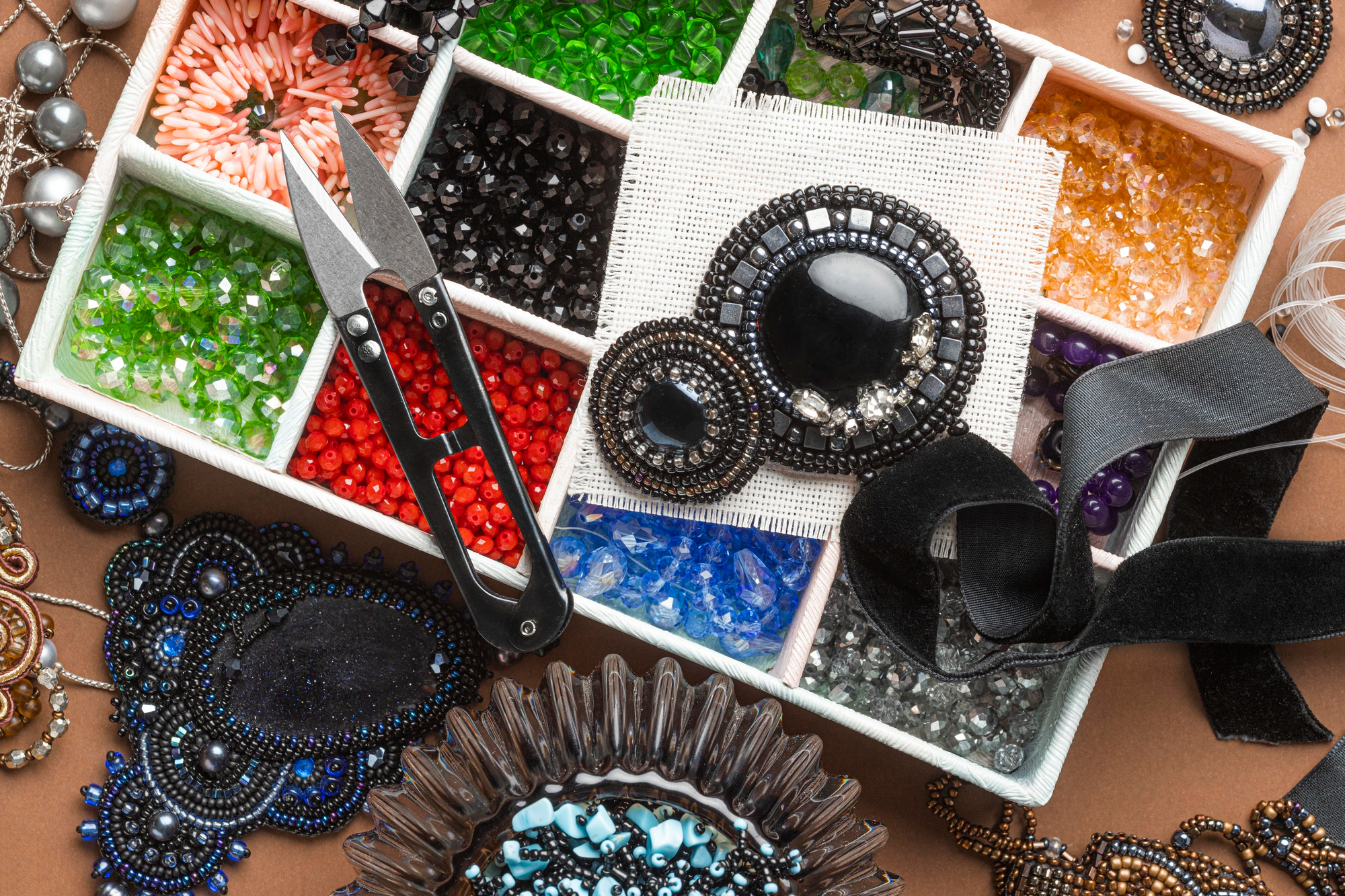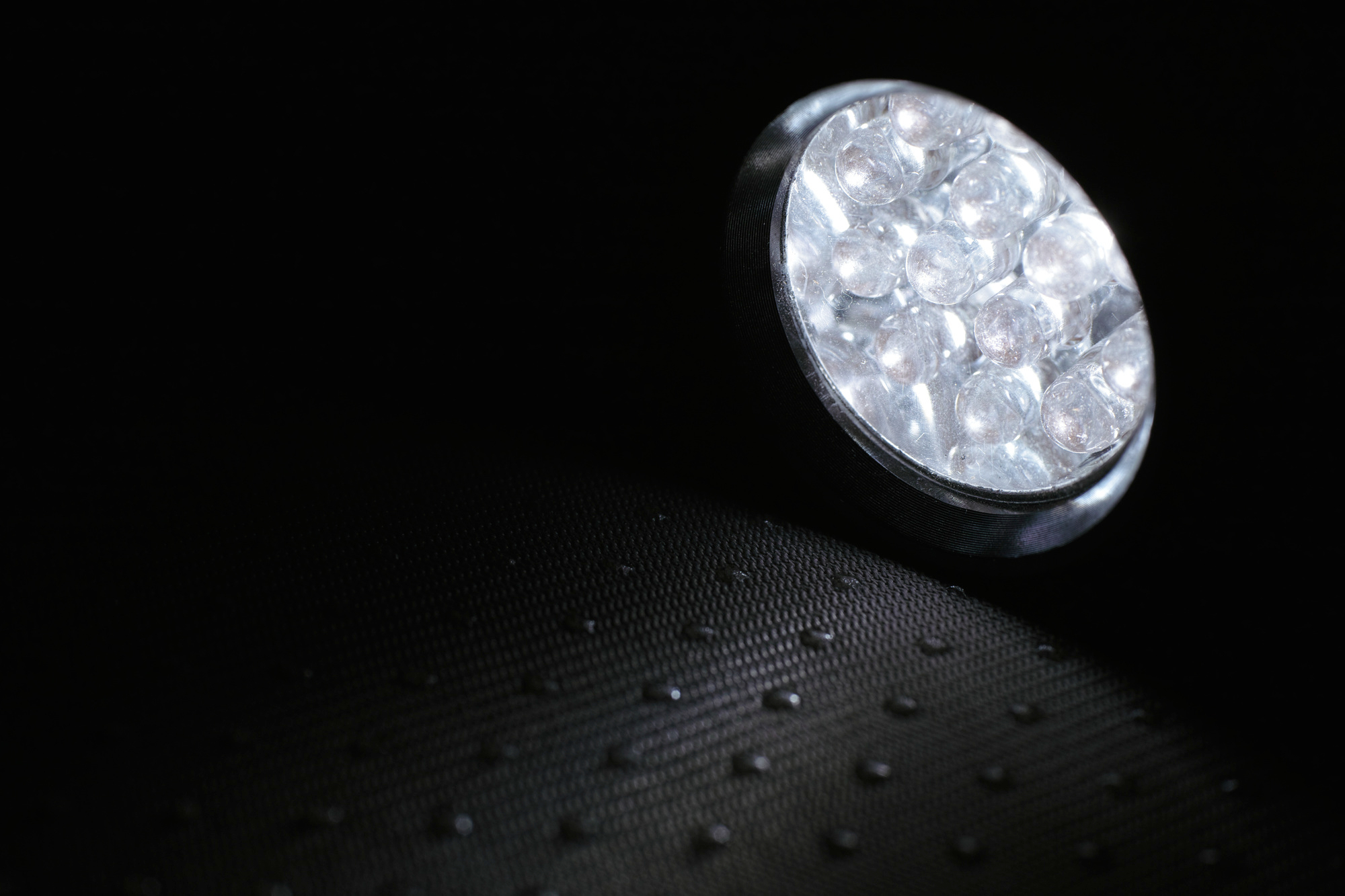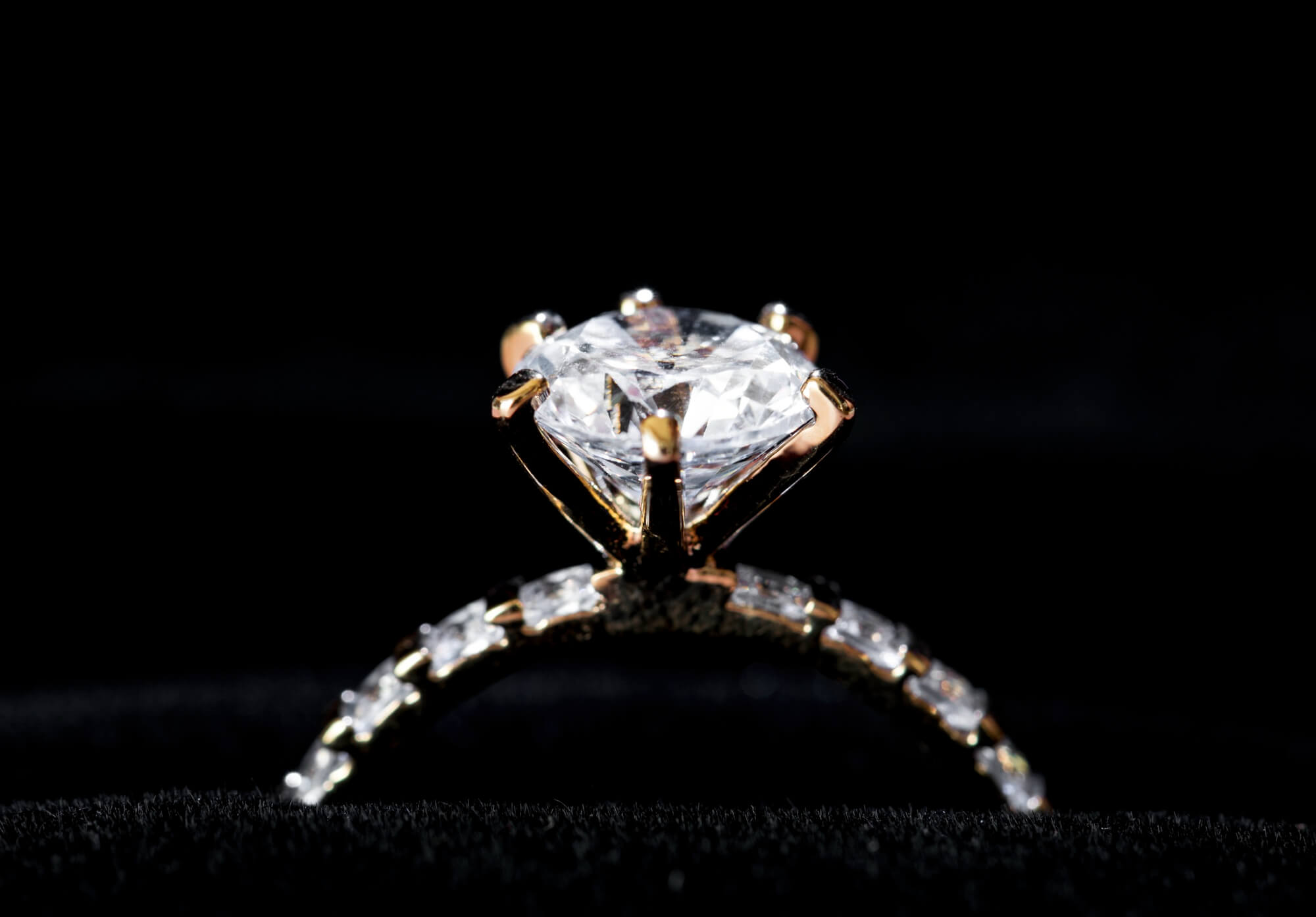WHITE DIAMOND
White diamonds are considered the epitome of timelessness, elegance, and sophistication. They are renowned for their unparalleled brilliance and beauty and revered as the ultimate sign of commitment, passion, and everlasting love. In this introduction, join us as we explore the dazzling world of white diamonds, their rich history, their natural occurrence, and how they affect modern lives in the fashion and investment realm.
We will uncover how these white diamonds are naturally formed and mined from the depths of the Earth’s mantle. We will discuss its significance in our history, its types and shapes available, and some of the most famous white diamonds that have ever been dug. Additionally, we will embark on a journey upon its evaluation through our modern era; together, we will uncover its investment potential and many other important facts about these bright diamonds.
Throughout history, white diamonds have always been part of our culture and one of the most appealing fruits our beloved Earth has produced. From its traditional significance to its contemporary uses, the white diamond transcends time and cultures worldwide. Now, let us begin our journey by asking the most important question to learn more about white diamonds, and this question is:
What is a White Diamond?
White diamonds are diamonds that have a white coloration throughout their facets. They are often called colorless diamonds due to the absence of any color except white. In contrast, colorless diamonds cannot be called white diamonds due to their transparent nature, and this is where the confusion between these two types of diamonds starts.
A white diamond is considered part of fancy-colored diamonds; they exhibit the actual white milky color and can be compared to cloudy white paint. Unbeknownst to the general public, white and colorless diamonds are two different types. The colorless diamond exhibits a transparent, no-color, or no visible hues can be seen. Meanwhile, the white diamond has a cloudy appearance and visible milky shade.

Explore all types of white diamonds
Three main types of white diamonds are circulating in the luxury diamond jewelry market; these three types are naturally mined, synthetically produced or lab-grown, and treated white diamonds. Each type of white diamond exhibits benefits and disadvantages compared to the other two types of white diamond. Some prefer naturally mined, while others prefer treated or synthetically produced white diamonds. Here is a brief explanation of their main differences.

Naturally Mined White Diamond
Naturally produced white diamonds are formed over billions of years under extremely high pressure and temperature beneath the Earth’s mantle. They are the most sought-after white diamonds due to their rarity and exclusivity. They often command a higher price in the market, and people prefer them over them for collection and investment reasons.

Synthetically Produced or Lab-Grown White Diamond
Synthetic diamonds, also known as lab-grown diamonds, are gemstones that are produced within certain controlled conditions in laboratories and institutes. Gemologists and scientists use two methods to recreate these types of diamonds: high-pressure high-temperature (HPHT) and chemical vapor deposition (CVD). Synthetically produced diamonds often have fewer inclusions and are more affordable than naturally mined white diamonds.

Treated White Diamond
A treated white diamond is a naturally mined diamond that has undergone treatment due to their several noticeable inclusions and blemishes, which affect the natural diamond’s beauty and sparkle. A treated diamond undergoes several processes to enhance its color and clarity. The most common treatment for a diamond includes the HPHT treatment method, which improves or alters the natural diamond’s color. On the other hand, to enhance the clarity of a treated diamond, it is often subjected to laser drilling or fracture filling.
Cultural Significance: White Diamonds in Traditional and Modern Jewelry
Historically, the allure of white diamonds in culture has long been essential in traditional and contemporary jewelry. In many cultures, they are used in many jewelry settings, expressing purity, wealth, eternality, uniqueness, and status in society across many historical periods. The beauty of these white diamonds is not only for traditional eons, but it transcends modern jewelry fashion jewelry such as engagement rings, contemporary fashion statements, and many other dazzling displays of accessories used for extravagant events and red-carpet appearances.
Moreover, white diamonds are also used as a symbol of artistic and cultural expression. It plays a significant role in arts and literature as a symbol of desire and aspiration. It is also used in films, music, and plays as a sign of achievement, and they are often used for representing the pinnacle of conquest, which adds a great value of drama and allure to the narrative of a story. The white diamond transcends time by crossing traditional resonance and modern society through its cultural significance.

Quality and grading of white diamonds
When checking the quality and grade of any diamonds, the most accurate grading method is checking for the diamond’s 4Cs: cut, clarity, carat weight, and color. In the case of white diamonds, they differ in checking the color intensity of a diamond. These criteria help both gemologists and consumers understand the characteristics and origins of a diamond to make a better-informed decision. Checking the quality of a diamond is mainly done to determine the diamond’s beauty, value, and pricing.
Some additional factors when checking a white diamond’s quality and grade are its symmetrical proportions, polish grade, and fluorescence, which also directly contribute to the white diamond’s value and beauty. Symmetrical proportions of a diamond refer to the alignment and intersection of facets, the polish grade describes the smoothness of the diamond’s surface, and the diamond’s fluorescence is the diamond’s ability to absorb and reflect light.
Understanding these fundamental aspects of a diamond’s quality and grading helps potential buyers, jewelry stores, and any type of investor choose suitable diamonds that meet their specific considerations. Whether by the diamond’s budgetary concerns, aesthetic beauty, or potential in the investment realm, a white diamond can be categorized according to any specific needs that a consumer finds in this beautiful, dazzling white diamond.
White Diamond Cuts and Shapes
With their exceptional allure and designs, white diamonds can be cut into different shapes and sizes depending on the consumer’s preference, allowing them to sparkle even more and fit into any jewelry setting. White diamonds are often cut to enhance their natural brilliance and aesthetic appeal, to influence the diamond’s ability to reflect light significantly, and they are cut to make them appear more luminous and sparkling throughout their specific usage in jewelry settings.
Here are some of the most popular cuts and shapes for white diamonds in a jewelry setting.

Round Brilliant Cut
The most popular cut among all of the available cuts for diamonds, the round brilliant cut is perfect for white diamonds due to the mechanics of its shape that showcases the natural brilliance and sparkle of any colored or colorless diamonds. Round brilliant cuts are often used in engagement rings and other fine jewelry like necklaces, pendants, earrings, and even bracelets.

Princess Cut
When it comes to engagement rings, the princess cut holds the top place for the most popular cut among engagement rings due to its style, which maximizes the sparkle of a diamond from its face-up position. Also, its square or slightly rectangular shape allows the white diamond to accentuate in an engagement ring jewelry.

Radiant Cut
The radiant cut white diamond promotes a vibrant and lively display of brilliance and luxury due to its shape, which can be square or rectangular with trimmed corners. The radiant cut combines the good qualities of emerald and round cuts, brilliance, and depth, which is why the radiant cut white diamond appears to be much more unique and striking.

Pear Shape and Heart Shape
Both of these shapes exhibit a more romantic and feminine appeal; they are often used for white diamond jewelry gifts for someone special or even in special events like birthdays, anniversaries, and ceremonies, which adds a personal touch of love for these special occasions.
Comparing White Diamonds to Colorless Diamonds
Many people think that colorless and white diamonds are the same; as confusing as they could be, they are two different types of natural diamonds. Colorless diamonds are well-known for their traditionally clear and outstanding brilliance, while white diamonds are known for their modern appeal and softer, milky, and cloudy glow. Moreover, these two kinds of diamonds have different distinctions and usages in a jewelry setting, allowing the jewelry to achieve its maximum beauty.
Colorless diamonds are the most traditional diamonds available due to their timeless appeal. They are primarily sought-after for their brilliance and non-cloudy appearance and are often associated with purity and luxury. Furthermore, the investment potential of colorless diamonds is far more stable compared to white diamonds; investors prefer the historical performance of colorless diamonds in contrast with white diamonds due to their predictability in the market.
On the other hand, white diamonds exhibit the same level of transparency and brilliance when compared to colorless diamonds. The beauty of white diamonds comes from a softer, milkier, cloudier, and more diffuse luster, which gives them a distinct character compared to the sharp and bright sparkle of colorless diamonds. Their value is lower compared to colorless diamonds, which is why investors and collectors often sought for colorless diamonds preferred to them.
Crafting Distinctive Jewelry Designs with white diamonds
White diamonds, with their distinct milky characteristics and cloudy appeal, offer a remarkable versatility for artisans and jewelers when crafting an exclusive piece of art jewelry that stands out among any other colored diamonds. Customizing the white diamond in jewelry designs offers a distinctive and personal allure, which both consumers and jewelers celebrate. Here are some great ideas on how jewelers and artists craft their own unique jewelry designs using white diamonds.

Engagement Ring
Perhaps the most unique way to craft distinctive engagement rings is through a white diamond centerpiece. Choose a white diamond as a center stone to give the jewelry a unique twist. The milky luster of the white diamond can be paired with smaller, clear, colorless diamonds to highlight the tranquility of the jewelry, creating a sophisticated and unique look.

Pendants
The white diamond in a piece of pendant jewelry offers a minimalist yet elegant approach. By doing this, set the white diamond in a solitaire setting to enhance its unique glow and give it an eye-catching style. White diamond pendants can be the perfect jewelry for casual and formal attires.

Earrings
White diamonds that are used in earrings offer a soft glow that enhances the wearer’s features. It allows its users to have a gentle radiance rather than an intense brilliance, and it is perfect for everyday use and even for evening galas or special occasions. With the white diamond as its centerpiece, it can be used in earrings such as drops, studs, and halos, creating a distinctive appeal.

Custom Art Pieces
Some famous uses of the white diamond in jewelry are for pieces customized based on the personal preference of its user. In contrast, others are suggested by artisans and jewelers who prefer intricate and modern designs. Describing a concept to an artist based on requests, preferences, and likings will add a more personal touch to any art pieces produced by them. The possibilities of the white diamonds in the realm of jewelry and art are truly limitless.
Investment Insights: Why White Diamonds Are Gaining Value in the Market
When planning to purchase a white diamond, whether for a casual accessoravy, blending it on formal attire, or even for investment purposes, there are several important factors to consider before making an informed decision. These crucial factors dramatically contribute to the white diamond’s value, authentication, and overall beauty, so studying them is as important as knowing about them. Here are some crucial aspects to look for when eyeing white diamond jewelry.
Let us tour why these white diamonds continue to grow in the investment realm by knowing the essential factors in which they excel.
Limited Supply and Growing Demand
The limited supply of white diamonds in the market and the growing demand for them in modern jewelry applications increase their value incrementally. When investing in an asset, always check for its demand in the market, whether it is strong or partially weak, and its total current circulating supply in the market. Understanding the law of supply and demand can help a potential customer when planning to purchase a white diamond for investment purposes.
Portable Tangible Assets
Investment assets like vehicles, stocks, real estate properties, bonds, etc., are hard to sell and require paperwork, which gives the seller and buyer a hard time when in need of cash. Portable assets like gold, silver, and diamonds, especially white diamonds, can be a much more versatile source of money in times of need. These types of assets can be easily transported, sold, and stored, which offers a tangible form of wealth that is not subjected to market fluctuations and can serve as a hedge against inflation.
Diversification of Assets
White diamonds can be an excellent way to diversify the investment portfolio of any potential investor or collector. A Seasoned investor constantly diversifies their assets among investments proven to be inflation-proof; they also diversify their assets to reduce the overall risk across different asset classes and potentially improve their long-term returns. White diamonds are a great diversification strategy among holdings due to their lower cost and higher potential returns.
Historical Appreciation
The consistency of the white diamond’s value has been proven resilient across many years and historically. They demonstrated toughness in the investment realm by maintaining their value over time, significantly larger stones and high-quality white diamonds, and even during economic crises such as the pandemic. This appreciation in value is due to the growing fascination and demand for colored diamonds such as the white diamond, red carpet events, and famous artists and celebrities who celebrated the allure of the white diamonds, which makes this gemstone grow in demand years.
There are several reasons why the white diamond has been constantly growing in the investment realm. Its low-supply nature and increasing demand across celebrities and fashion designers are some of the main reasons why this gemstone will keep its value in years to come. Not to mention all of these factors, there is still potential for white diamonds in the realm of investing, and it is never too late to start funding hard-earned money for future gains in these beautifully unique white diamonds.
Celebrity Style Spotlight: White Diamonds Making Waves on the Red Carpet
White diamonds have long been associated with fame, luxury, simplicity, and elegance, which is why celebrities, famous artists, singers, songwriters, and many other superstars embrace the uniqueness of the white diamond. Several well-known celebrities have graced these high-regarded occasions like the Golden Globe Awards, Emmys, Grammy’s, and many more. Here are some of the top celebrities who rocked these occasions wearing centerpiece white diamond jewelry.

Angelina Jolie
Famous for her leading roles as Lara Croft in the movie Tomb Raider and as Maleficent in the self-titled movie, Angelina Jolie has been seen wearing white diamond centerpieces on numerous red-carpet occasions. Whether a statement necklace or dazzling earrings, she effortlessly stunningly wore the white diamond.

Jennifer Lopez
J.Lo is a reputable American actress and singer known for her songs like “Let’s Get Loud” and “On the Floor.” She was seen wearing white diamonds in glamorous red-carpet appearances. She wore white diamonds to complement her show-stopping dresses in many events and galas.

Beyonce
One of the most influential figures in the entertainment and fashion industry, Beyonce is no stranger to making trends, bold fashion statements, and one-of-a-kind jewelry choices like the white diamond. She has been photographed on many occasions wearing the stunning white diamond centerpiece jewelry, which adds sparkle and sophistication to her iconic appearances.
White diamond certification
The certification of a diamond is one of the most crucial documents to have when planning to purchase a white diamond in the near future. It has the most detailed assessment of a diamond conducted by the most reputable institutes and laboratories internationally. The Gemological Institute of America (GIA) and International Gemological Institute (IGI) are some of the most reputable laboratories that conduct thorough examinations across multiple types of precious gemstones, particularly the white diamond.
The certificates that are issued from these reputable institutes can guarantee the authenticity, origins, and other essential details of a white diamond. It has all of the important traits, especially the cut, clarity, carat weight, and color of a white diamond, determining its value, or whether it is synthetically produced or lab-grown, or it can even determine whether a white diamond is treated or naturally mined. It can also indicate the origins of a white diamond and where it was mined.
All of our white diamonds have their certificates and documents ready to be released as soon as purchased. These documents are legitimately from reputable institutes like GIA and IGI. We ensure the quality of every diamond we sell, its authenticity, and certifications to have our client’s trust and assurance.

Verifying Authenticity: A Guide to Checking White Diamond Validity
Although a certificate from reputable institutes is one of the best ways to determine a diamond’s authenticity, there are many different ways to verify and ensure a white diamond’s validity. Verifying the authenticity of a white diamond is essential to ensure that the diamond is genuine and is a high-quality gemstone. Here are some other ways to determine the diamond’s origins and authenticity and to learn more about what to look for in any piece of high-value white diamond.
Visual Inspection
Check the white diamond using magnifying equipment and look for any imperfections, inclusions, or blemishes. Legitimate white diamonds often have these natural characteristics, unlike synthetic ones, which always appear flawless due to the controlled environment from which they are made.
Color and Clarity
The color and clarity of a white diamond should be assessed by comparing them to the grading scale that was provided by reputable institutes for gemological purposes, such as the GIA and IGI. White diamonds are graded based on the intensity of their color and their clarity from flawless to included. Always be wary of diamonds that deviate significantly from their certifications.
Consultation with Experts
If still in doubt, always consult for a second opinion with expert jewelers and qualified gemologists. Seeking advice from experts always comes in handy when it comes to verifying the authenticity of any diamond, mainly white diamonds. They can provide extra assistance when performing tests and exams on white diamonds. By using state-of-the-art equipment and updated knowledge about white diamonds, they can ensure the authenticity and validity of a white diamond.
Hallmarks and Engravings
Always look for a hallmark or engraving upon the setting of the white diamond or even in the white diamond itself. Some diamonds often have unique identification inscriptions that are engraved into them and are written on the report or certificate. This can also help an individual identify the validity of a white diamond.
Lab Grown vs. Mined White Diamonds
Naturally mined and synthetically produced, known as lab-grown diamonds, are comparable in many aspects; while this is real, they impose several significant differences between each other. They have a lot of differences that contribute to their overall value, allure, investment potential, and desirability. We created a small table to tell their differences quickly and compare them side by side.
Factor
Origins
Cost and Value
Investment Potential
Quality and Rarity
Synthetically Produced White Diamonds
Created by gemologists and scientist in laboratory settings.
More affordable than mined diamonds due to lower production costs.
Lower investment potential due to higher supply and lower demand.
Available in a wide range of qualities and sizes, with consistent color and clarity due to controlled production conditions.
Naturally Mined White Diamonds
Naturally occurring and mined from diamond deposits in various regions around the world.
More expensive due to the costs associated with mining, extraction, and distribution.
Higher investment potential due to rarity and scarcity which contributes to the low supply and has an increasing demand in modern applications.
Rarity varies depending on the quality and size of the diamond, with larger, higher-quality stones being scarcer and more valuable.
Quick Facts about white diamonds
- White diamonds are also known as “Opalescent” due to the reflective flashes of color that can be seen from its facets when in face-up viewing.
- White diamonds, also called colorless diamonds, have a subtle hint of the color white, creating a milky and cloudy look.
- In contrast, colorless diamonds cannot be called white diamonds due to their transparent nature, and this is where the confusion between these two types of diamonds starts.
- The demand for fancy white-colored diamonds remains strong in the jewelry market, driven by their universal appeal and timeless elegance.
- Despite being termed “colorless,” fancy white colored diamonds may exhibit subtle hints of color, typically appearing slightly yellow or brownish under specific lighting exposures.
FAQs
How much are white diamonds worth?
Depending on its 4Cs, cut, clarity, carat weight, and color, an average white diamond can cost about $4,400 up to $7,600.
What are white diamonds called?
White diamonds are sometimes called “Colorless Diamonds” or “Opalescent.”
How rare are white diamonds?
White diamonds are some of the rarest colored diamonds, contributing to not more than 1 percent of all mined diamonds.
Where do white diamonds come from?
White diamonds came from countries like Botswana, Russia, Canada, South Africa, Australia, and Namibia.
How are white diamonds formed?
The same as any diamond, it was formed deep beneath the Earth’s mantle, with exceedingly high temperature and pressure, billions of years ago.
What do white diamonds symbolize?
They symbolize purity, clarity, everlasting love, timelessness, uniqueness, hope, joy, and optimism.
Why are white diamonds so expensive?
Due to their natural rarity and scarcity, which promotes lower supply. And there is an increasing demand due to famous appearances by celebrities and famous persons.
Final Verdict
This comprehensive overview of the nature of a white diamond and its usage in all applications tackles the most interesting topics that contribute to the value of the white diamond for everyone – covering ideas such as their investment potential, crafting jewelry based on them, and the future of white diamonds in the red-carpet scene.
We are grateful to have you as our reader, and we hope that we helped you make an informed decision when purchasing a white diamond for any reason. It might be a casual gift for someone special, a diversification of your hard-earned money as an investment, or even evening jewelry to match perfectly in your evening gowns and attires. We thank you for joining us on this dazzling display of ideas and knowledge; we hope that we are able to answer all your questions pertaining to the world of white diamonds.




